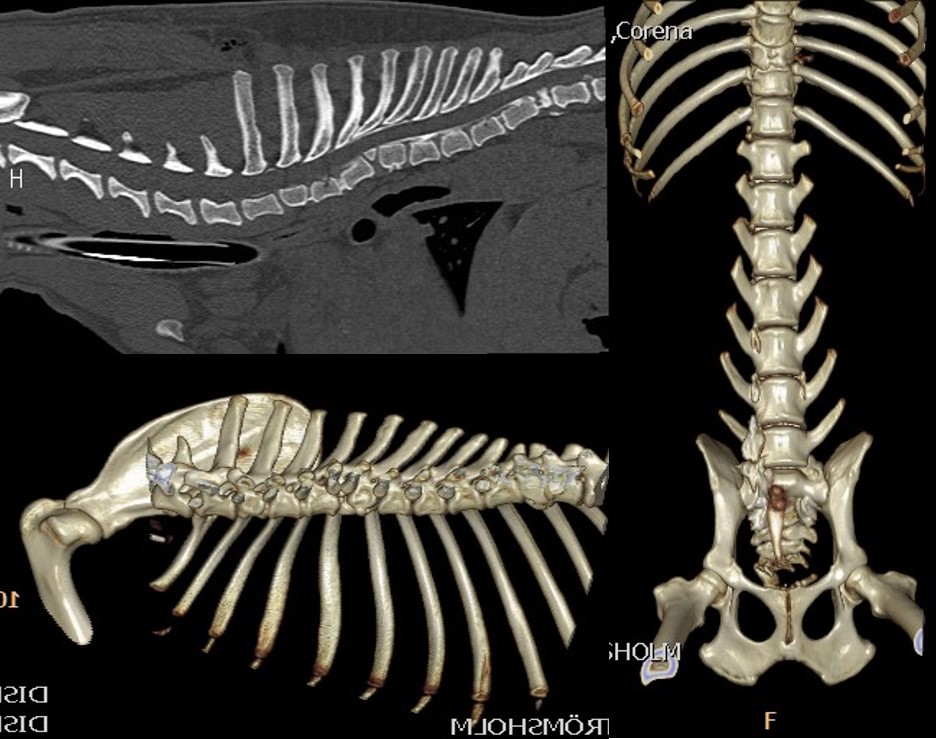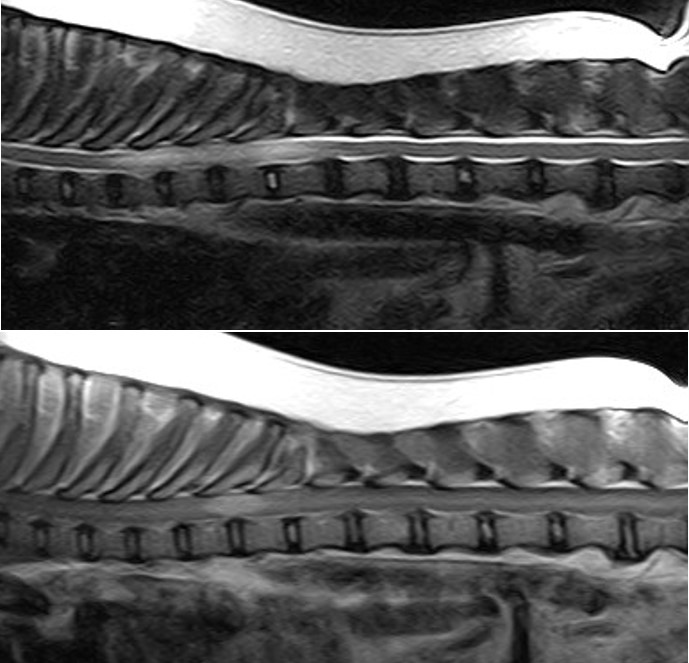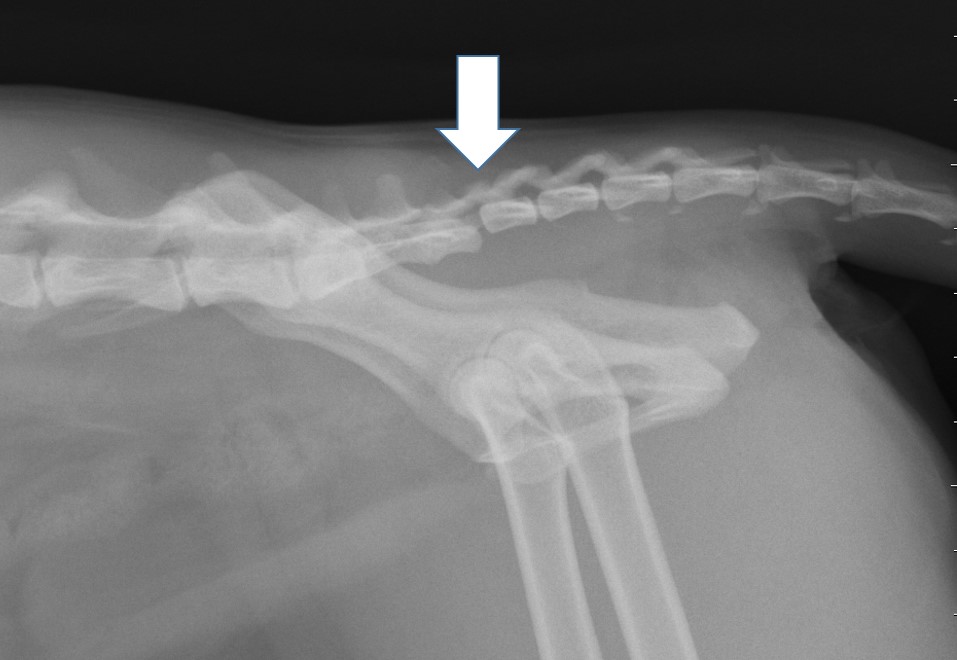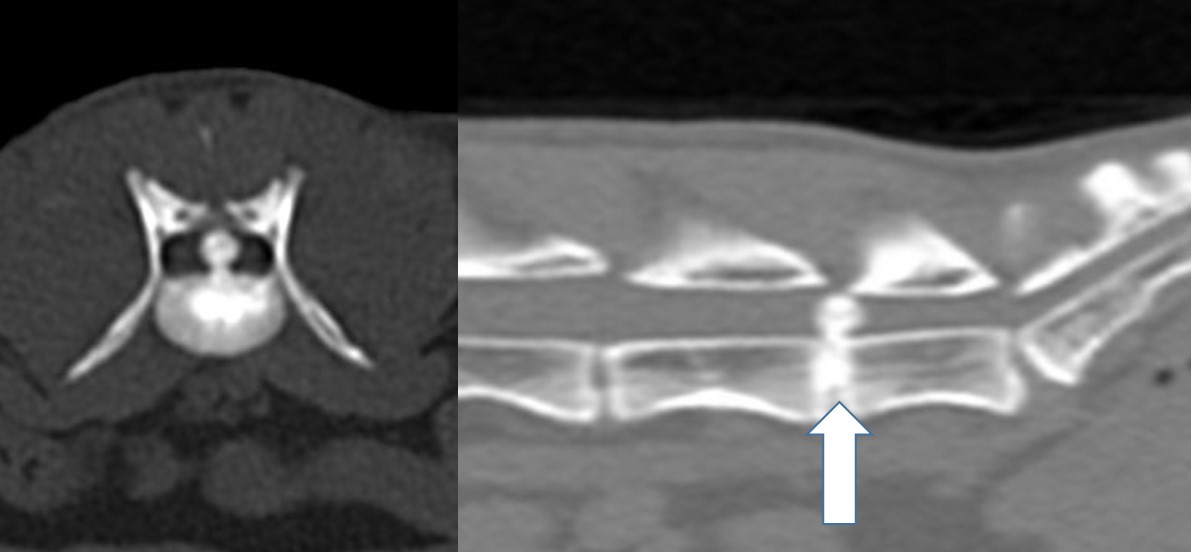Diseases of the Spine
Many conditions and diseases can affect the spine of your dog or cat. Some of them are more common like disk extrusion in the Dachshund, others rare like intraspinal cysts. Some come acute, others slow, but all these pathologies have often similar symptoms like pain and weakness of the limbs. A successful treatment needs an exact diagnosis and careful planning of the surgery, followed by an individually adapted rehabilitation. After the initial examination high-tech equipment is necessary for the diagnosis and prognosis of the condidion. The RyggCenter can offer computer tomography and magnetic resonance imaging together with experienced specialists. Please look at the case examples of spine illness we can treat in Strömsholm.


List of spine diseases in dogs treated at the
Rygg.Center:
- Disk disease
Hansen type 1 a-f, and type 2
- Degenerative Lumbosacral Syndrom DLSS
- Malformations
- Syringohydromyelia
- Tumour
- Meningoencephalitis
- Discospondylitis
- Subarachnoid diverticula
- Trauma/Fractures
- Calcinosis
circumscripta/Osteochondrom
- Cervical stenotic myelopathy (‘Wobbler’)
- Thoracic
stenotic myelopathy
- Synovial
cyst
- Atlantoaxial
instability
- Dermoid sinus/Dysraphy
Spine Disease in Cats
A lot of people think of paralysis of the Dachshund or the lumbo-sacral disease in German Shepherd Dogs when they hear of spinal disease of small animals. Of course these cases are high in numbers, but dogs have many more diseases affecting the spine.
And we
should never forget the cats. They also suffer from spine pain and paresis. The
diagnostic steps and the surgeries to help them are the same as in dogs.
At our hospital we see cat patients after sustaining a trauma. They can have spinal fractures (Fig 1). But because cats have normally a very elastic body, they bend the spine during the trauma until the disk ruptures with a traumatic disk extrusion as consequence. The damage to the spinal cord can be severe, but in most cases a surgery would not help. The MRI is the only diagnostic tool to clearly diagnose such a traumatic extrusion (Fig 2). Fractures to the sacrum and the first vertebra of the tail are also typical for cats. The nerves to the bladder are often damaged in these patients, so the cat has to be in the hospital to ensure the treatment of bladder and fracture (Fig 3).
 Fig 1 Fig 2
Fig 1 Fig 2 
Middle aged and older cats sometimes change their behavior, they don’t jump up anymore, play less and maybe do not move so much outside. This is often a sign of pain in the hind legs or in the spine. Like German Shepherd Dogs cats can have degenerative lumbo-sacral disease (Fig 4). The life quality of these cat patients can greatly improve with the right pain medication, but the disease should be diagnosed first with a CT examination, because the pain could also come from another place, for example a cruciate ligament rupture. Surgical treatment of lumbo-sacral disease is rarely necessary in cats.


Fig 3: Tail fracture in a cat Fig 4: Lumbo-sacral disease
If your cat has a disk disease, which we finally diagnose with a CT or MRI, surgery has to be discussed if the hind legs are paralyzed. This is not so common, but we see patients like this from time to time (Fig 5).
 Fig 5: Disk extrusion in a middle aged Siamese Cat
Fig 5: Disk extrusion in a middle aged Siamese Cat
And also
uncommon are tumors in the spine. They cause pain and neurologic deficits, and
to diagnose many of them a MRI is necessary.
Even if disease of the spine is often a serious problem, we can also help many cat patients to regain a good life quality with medication and sometimes with surgery. We truly love our cats, and we always give our best care for them.
Home Rygg.Center Cases and Publications Contact
RyggCenter © 2022